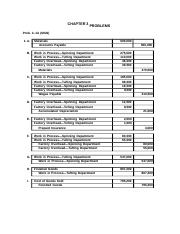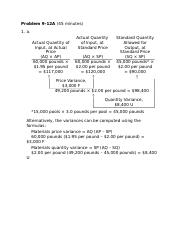Content

Often a company will follow up on an outstanding invoice, only to be told payment is coming and it never arrives. When payment becomes an issue, consider the relationship with the client, but also take into account that time is money. This is income your company is owed, and that the client is expected to pay. So, don’t wait too long to escalate this to your https://online-accounting.net/ collection agency. They’re the experts, they will know what to do and will help to ensure you receive payment. For an invoice amount to be added to trade receivables, full payment must be expected within one year. Entities reporting under strict cash basis accounting can still create «receivables» accounts to keep track of monies legally owed them.

An enterprise’s liquidity analysis comprises a company’s short-term financial positions and its ability to pay its short-term liabilities. If you’re struggling with managing your customers and your trade receivables manually, consider upgrading to accounting software. Even the most basic applications on the market today offer easy invoicing and accounts receivable reporting.
Accounting for Trade Receivables
Accounts payable or A/P refers to money a company owes its suppliers. In the world of bookkeeping, accounts payable appears as a liability.
What is difference between trade receivables and debtors?
In most cases, trade debtors will constitute either all of what's outstanding at any one time or the vast majority of that. Trade receivables means much the same thing, except your business may be owed money for something other than goods or services supplied.
Usually, the agency charges you a fee or percentage of the amount collected. Taking on this loss and being stuck with 50,000 units of custom books could be tragic to the seller. If you’re thinking about the future growth prospects of a company, make sure to take a look at its accounts receivable book. A thorough assessment of buying and credit trends of past customers can help to formulate new marketing strategies and sales plans. When companies have access to past purchases and the credit behaviour of the customers, it is easy to decide whom to offer credit plans and whom to refuse credit. Trade receivables files in digital format allow easy sorting and analysis capabilities that make it easier possible to make future decisions.
Working Capital With Receivables
In addition to trade receivables, current assets also include items such as cash, cash equivalents, stock inventory and pre-paid What Are Trade Receivables? It’s Money Your Business Is Owed liabilities. In accrual accounting, when finance teams record all unpaid expenses, they act as placeholders for cash events.
- Business professionals who understand core business concepts and principles fully and precisely always have the advantage, while many others are not so well-prepared.
- Accounts receivable is a current asset – it’s an asset because it can be used to generate revenue and produce a profit.
- That’s why it’s important for companies using A/R to track the turnover ratio and be proactive with customers to ensure timely payments.
- Furthermore, a right or other type of access can be legally enforced, implying that a company’s economic resources can be used at its discretion.
Selecting the ideal times to allow delayed payment will help you keep a good balance between being flexible and ensuring prompt payment. With long-term projects or expensive products and services, a partial advance payment can be a good way to stay assured of the intent of the customer and decrease the risk of non-repayment. Because they represent funds owed to the company, they are booked as an asset. Account Of TransactionAccounting Transactions are business activities which have a direct monetary effect on the finances of a Company. For example, Apple representing nearly $200 billion in cash & cash equivalents in its balance sheet is an accounting transaction. While you can certainly run an all-cash business, it will be difficult to increase your customer base and your sales numbers if you don’t extend credit to customers.
What if they don’t pay?
A company’s trade receivables or accounts receivable are an important consideration when it comes to calculating working capital. Non-trade receivables are also typically recorded on the balance sheet as current assets. Yes, you should include a discount on your accounts receivable balance. First, they can encourage customers to pay their bills sooner and in advance. As a business owner, you may have noticed that some customers pay their bills at the end of each month along with other bills like rent or utility payments.
- PIM systems can come as standalone products, but many fit within larger digital experience platforms.
- A company avails working capital loans to meet its short-term requirements for day-to-day operations.
- You can learn more about the standards we follow in producing accurate, unbiased content in oureditorial policy.
- Managing trade receivables or accounts receivable is vital for the financial health of your business.
- They’re likely to be the largest asset on most businesses’ balance sheets, as they represent all the outstanding money owed to your business but is due soon.
- Also, offering such flexibility and ease builds loyalty and thus customers are retained for longer.
